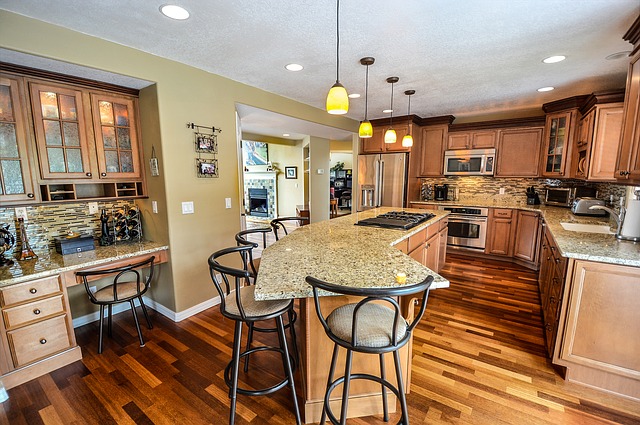 Maintenance is an important part of home ownership. Improper care compromises the safety of your property and can result in big repair bills. Include these strategies in your maintenance plan to reduce your out-of-pocket costs.
Maintenance is an important part of home ownership. Improper care compromises the safety of your property and can result in big repair bills. Include these strategies in your maintenance plan to reduce your out-of-pocket costs.
Educate Yourself
It’s usually cheaper to do most home maintenance jobs yourself. Teach yourself some basic skills to save yourself from professional fees.
- Take some classes. Community colleges and hardware stores often host community courses that help you plan projects, get familiar with new tools, or gain more value from property assessments.
- Invest in beginner books on carpentry, electrical work, and plumbing. These will be invaluable references throughout your home ownership journey. Online versions allow searchable access to necessary information.
- Experience is the best teacher. Start with small, decorative projects to hone your hand skills. As confidence increases, you can try more difficult builds and repairs.
The right combination of knowledge and skills means you realize minimal maintenance costs.
Make Maintenance A Routine
Preventive maintenance catches small problems before they become big, expensive ones. Schedule essential tasks to ensure all the important parts of your property are monitored consistently.
- Perform a perimeter check when the seasons change. Walk around the outside of your home. Examine the grounds and exterior for signs of wear-and-tear or degradation. Take pictures and make a plan to address the damage.
- Have your HVAC system professionally serviced once a year. For those with allergies or other adverse respiratory conditions, have your ducts, vents, and filters cleaned every six months.
- Practice good property hygiene. Keep your landscaping, exterior, and storage spaces clean and uncluttered. If a problem does occur, an unkempt environment can complicate repair efforts.
Incorporate maintenance into your regular routine to circumvent emergencies.
Prepare Financially
Make sure you’ll always have enough money to fix your home with these tips.
- Decrease the deductible on your home insurance policy. You pay slightly higher premiums. However, the extra funds could come in handy if a big claim occurs.
- Start a home repair fund. Aim for an amount equal to 10% of the value of your property.
- Establish a relationship with a local contractor. Your friendly relationship and loyal patronage could earn you some valuable discounts in times of need.
The cost of maintaining your home doesn’t have to be a mystery. With these tips, you can keep a safe and healthy home without draining your bank account.
Your trusted real estate professional is a reliable source when it comes to helping you find a new home. If you are in the market for a new property, be sure to make contact today!
 According to the US Department of Energy, the average American household paid $111.67 each month for utilities in 2017. With some research and a few DIY projects, property owners can reduce those energy costs without sacrificing comfort or convenience.
According to the US Department of Energy, the average American household paid $111.67 each month for utilities in 2017. With some research and a few DIY projects, property owners can reduce those energy costs without sacrificing comfort or convenience. Are you just starting on your real estate investing journey? Many newcomers are surprised to learn that there’s more to making money on the real estate market than buying and selling. These are some of the most popular strategies real estate investors use to create profits. Which one is right for you?
Are you just starting on your real estate investing journey? Many newcomers are surprised to learn that there’s more to making money on the real estate market than buying and selling. These are some of the most popular strategies real estate investors use to create profits. Which one is right for you? Are you saving up money for a down payment? Saving money to put down on a home is always a smart idea, but there are right ways and wrong ways to go about it. Understanding how to best save for a down payment will go a long way toward ensuring you’re ready when you finally find the house of your dreams.
Are you saving up money for a down payment? Saving money to put down on a home is always a smart idea, but there are right ways and wrong ways to go about it. Understanding how to best save for a down payment will go a long way toward ensuring you’re ready when you finally find the house of your dreams. Your carbon footprint is the measure of your impact on the earth’s natural resources. This number describes the amount of fossil fuel it takes to support your lifestyle. In the United States, each person produces an average of 19.78 tons of carbon dioxide every year. A high carbon footprint means your daily habits are a quickening drain on our finite resources.
Your carbon footprint is the measure of your impact on the earth’s natural resources. This number describes the amount of fossil fuel it takes to support your lifestyle. In the United States, each person produces an average of 19.78 tons of carbon dioxide every year. A high carbon footprint means your daily habits are a quickening drain on our finite resources.  Your home is likely your largest investment. Beyond repairs and regular maintenance to keep it clean, comfortable, and safe, there are a number of projects that can increase the resale value of your property. These renovations top the list of changes you can make that positively impact your home’s value.
Your home is likely your largest investment. Beyond repairs and regular maintenance to keep it clean, comfortable, and safe, there are a number of projects that can increase the resale value of your property. These renovations top the list of changes you can make that positively impact your home’s value.